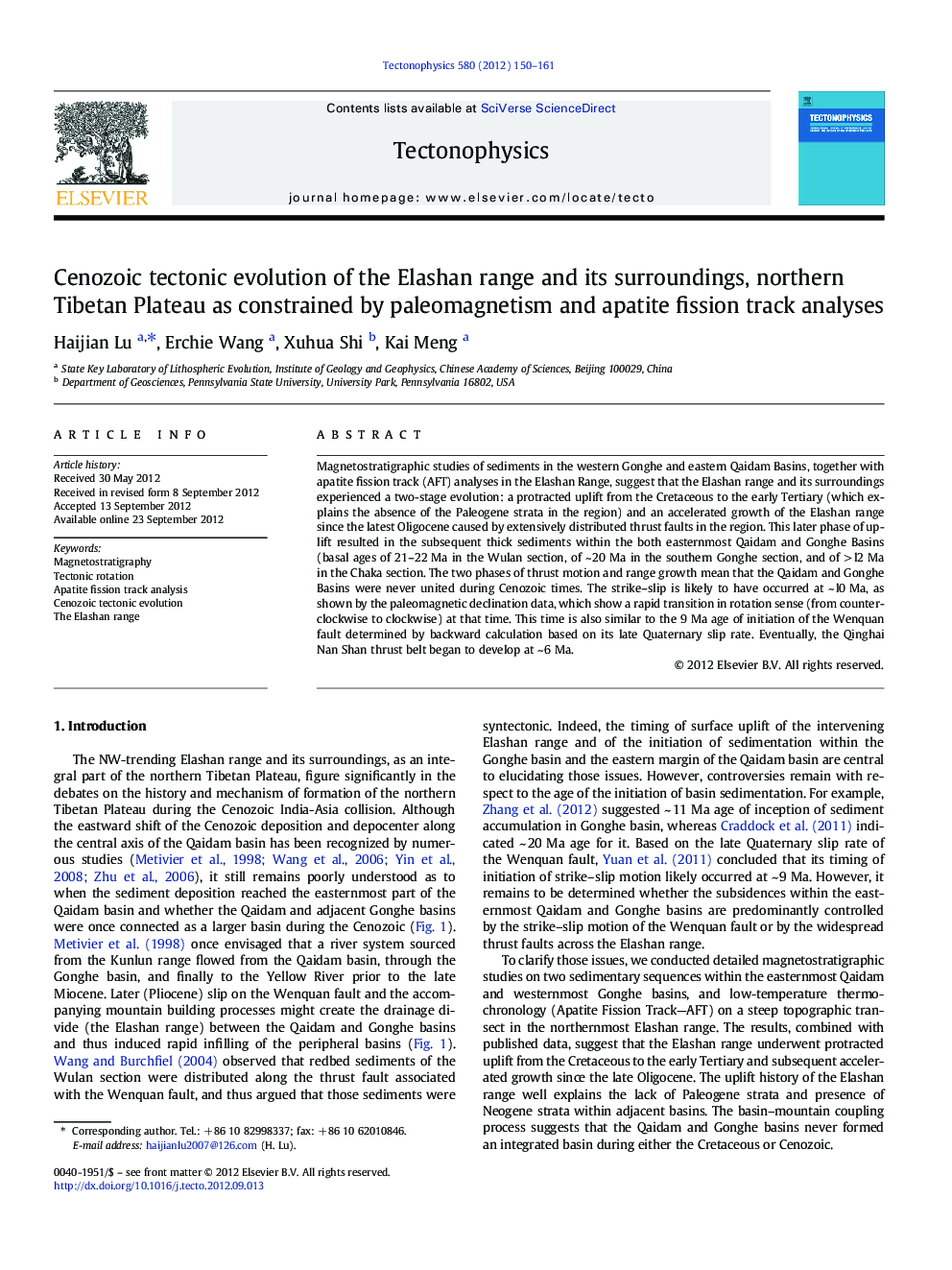| کد مقاله | کد نشریه | سال انتشار | مقاله انگلیسی | نسخه تمام متن |
|---|---|---|---|---|
| 6434187 | 1636805 | 2012 | 12 صفحه PDF | دانلود رایگان |

Magnetostratigraphic studies of sediments in the western Gonghe and eastern Qaidam Basins, together with apatite fission track (AFT) analyses in the Elashan Range, suggest that the Elashan range and its surroundings experienced a two-stage evolution: a protracted uplift from the Cretaceous to the early Tertiary (which explains the absence of the Paleogene strata in the region) and an accelerated growth of the Elashan range since the latest Oligocene caused by extensively distributed thrust faults in the region. This later phase of uplift resulted in the subsequent thick sediments within the both easternmost Qaidam and Gonghe Basins (basal ages of 21-22Â Ma in the Wulan section, of ~Â 20Â Ma in the southern Gonghe section, and of >Â l2Â Ma in the Chaka section. The two phases of thrust motion and range growth mean that the Qaidam and Gonghe Basins were never united during Cenozoic times. The strike-slip is likely to have occurred at ~Â l0Â Ma, as shown by the paleomagnetic declination data, which show a rapid transition in rotation sense (from counterclockwise to clockwise) at that time. This time is also similar to the 9Â Ma age of initiation of the Wenquan fault determined by backward calculation based on its late Quaternary slip rate. Eventually, the Qinghai Nan Shan thrust belt began to develop at ~Â 6Â Ma.
⺠AFT data indicate fast exhumation of the Elashan range since latest Oligocene. ⺠The adjacent basin sediments point to 22-21 Ma of initiation of sedimentation. ⺠The timing of strike-slip motion likely occurred at ~ 10 Ma. ⺠The Qinghai Nan Shan thrust belt began to develop at ~ 6 Ma.
Journal: Tectonophysics - Volume 580, 10 December 2012, Pages 150-161